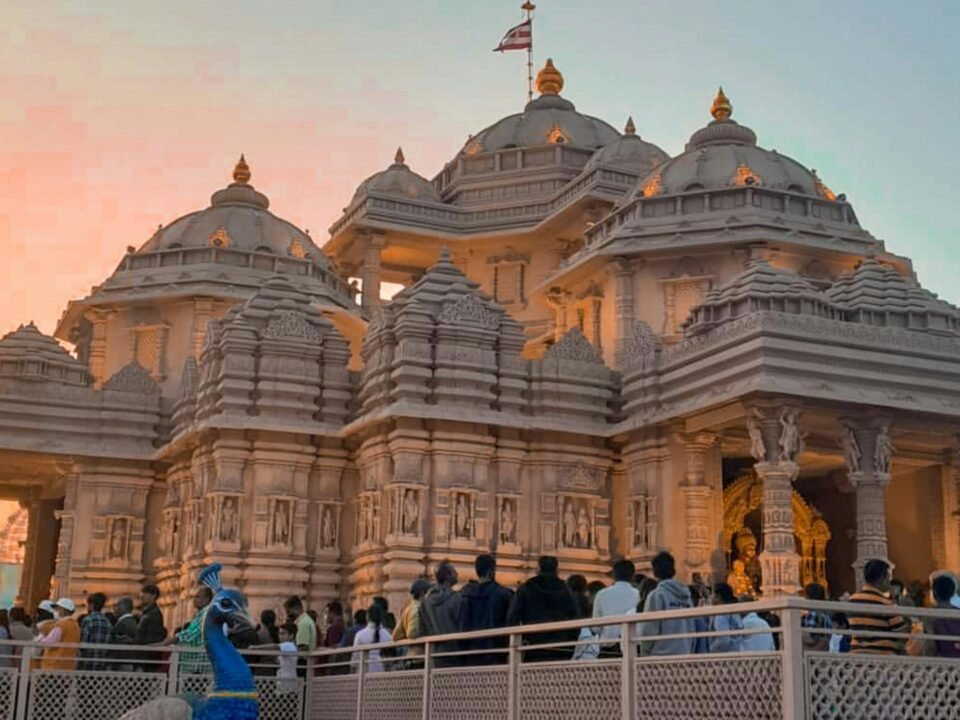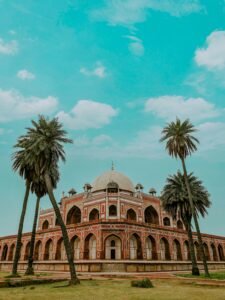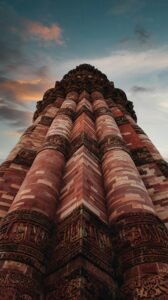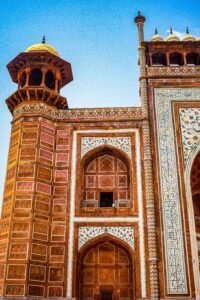

Explore the Historical and Cultural Significance of India Gate
July 1, 2024

Majestic Taj Mahal: A Jewel of Agra
July 3, 2024Amer Fort: Jewel of Rajasthan
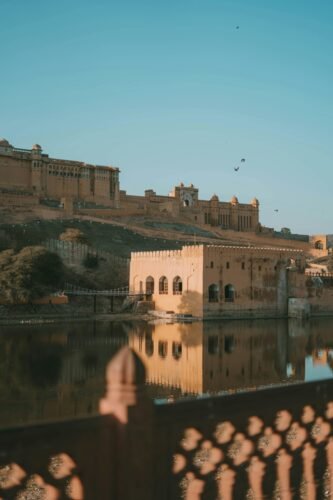

Historical Significance of Amer Fort
Amer Fort, a testament to the grandeur of Rajasthan travel, stands as a symbol of the region's rich cultural and architectural heritage. Founded in the late 16th century by Raja Man Singh I, one of the most trusted generals of the Mughal Emperor Akbar, the fort is strategically perched on the Aravalli Hills. This location was not chosen by accident; it provided a formidable defense for the kingdom of Amer, making it an essential stronghold in Rajput history.
Raja Man Singh I's vision for Amer Fort was one of both beauty and might. The fort's construction began around 1592, and it evolved over the years with contributions from successive rulers. The fort played a pivotal role in various historical events, including battles that sought to protect the kingdom from invaders. Its strategic importance is further underscored by treaties forged within its walls, which were aimed at securing peace and alliances with other powerful kingdoms.
Amer Fort also served as a stage for visits by notable historical figures, adding to its rich narrative. One such notable visitor was Emperor Akbar himself, who, along with Raja Man Singh I, shaped the fort's legacy. The fort's architecture reflects a blend of Hindu and Mughal styles, showcasing the syncretic culture of the time. Intricate carvings, expansive courtyards, and grand palaces within the fort complex highlight the architectural prowess and aesthetic sensibilities of the Rajputs.
The fort's historical significance is not merely confined to its military and political roles. It stands as a cultural beacon, embodying the artistic and architectural brilliance that Rajasthan tourism promotes today. Amer Fort's legacy is a vivid chapter in the chronicles of Rajasthan travel, attracting countless visitors who seek to delve into the storied past of this majestic region.
Architectural Marvels and Design
Amer Fort stands as a testament to the architectural brilliance of Rajasthan travel and tourism. The fort's design is a spectacular fusion of Hindu and Mughal architectural styles, showcasing an array of intricate carvings in marble and red sandstone. As visitors approach the fort, they are greeted by majestic gates, including the grand Suraj Pol (Sun Gate) and Chand Pol (Moon Gate), which set the stage for the architectural splendor within.
One of the fort's most notable sections is the Diwan-i-Aam, or the Hall of Public Audience. This expansive hall, adorned with beautiful pillars and intricate lattice work, served as the venue where the ruler addressed the public and heard their grievances. Adjacent to it is the Diwan-i-Khas, the Hall of Private Audience, a more intimate space where the ruler met with important dignitaries and advisors. The design of these halls reflects the grandeur and sophistication of the period.
The Sheesh Mahal, or the Mirror Palace, is another highlight of Amer Fort. This exquisite hall, encrusted with thousands of tiny mirrors, creates a dazzling effect when illuminated by candlelight. The craftsmanship involved in the creation of Sheesh Mahal is a marvel, showcasing the skill and artistry of the artisans of Rajasthan.
Sukh Niwas, or the Hall of Pleasure, is ingeniously designed to provide respite from the heat. The hall features an elaborate water system that channels cool water through its walls, creating a natural air-conditioning effect. The advanced engineering techniques employed here are a testament to the ingenuity of the builders of Amer Fort.
Furthermore, the fort is dotted with impressive courtyards and beautifully landscaped gardens, such as the Kesar Kyari (Saffron Garden), which is laid out in a star-shaped pattern. These spaces, along with the sophisticated water systems, exemplify the fort's advanced design and engineering. Amer Fort, with its blend of architectural grandeur and innovative design, remains a jewel in the crown of Rajasthan tourism.
Amer Fort stands as a testament to the rich cultural and artistic heritage of Rajasthan, a region celebrated for its historical splendor and vibrant traditions. The fort's architecture is a confluence of Rajput and Mughal styles, showcasing a variety of artistic forms that have endured through centuries. Intricate frescoes adorn the walls, depicting scenes from mythology and daily life, while glass inlays and elaborate murals lend a touch of opulence to the already majestic structure. These artistic elements not only enhance the aesthetic appeal of the fort but also offer a glimpse into the skilled craftsmanship of the artisans who contributed to its grandeur.
During its heyday, Amer Fort served as a bustling center of cultural activities, attracting poets, musicians, and dancers from across the region. The fort's courtyards and halls would come alive with performances of classical music and dance, creating an atmosphere of artistic vibrancy that resonated through its walls. Poetry recitals and literary gatherings were common, further cementing the fort's role as a cultural hub. This tradition of cultural richness continues today, with various festivals and events celebrating the fort's artistic legacy.
One of the most notable events is the annual Amer Fort Light and Sound Show. This captivating event narrates the fort's history through a mesmerizing blend of sound, light, and visuals, bringing to life the tales of valor, romance, and intrigue that are woven into the fort's fabric. The show not only serves as an educational experience for visitors but also as a reminder of the fort's enduring significance in Rajasthan tourism. Amer Fort remains a symbol of artistic excellence and cultural prosperity, drawing visitors from around the world who seek to immerse themselves in its timeless beauty and rich heritage.
Visitor Experience and Practical Information
Nestled in the rugged hills of Rajasthan, Amer Fort stands as a testament to the grandeur of Rajasthan travel. For those planning a visit, knowing how to get there is crucial. The fort is located approximately 11 kilometers from Jaipur, the capital city of Rajasthan. Visitors can easily reach Amer Fort by taxi, auto-rickshaw, or even local buses that ply regularly from Jaipur.
The fort is open to visitors from 8:00 AM to 5:30 PM daily. Entry fees are modest, with special rates for foreign tourists and discounts for students and senior citizens. For those keen on understanding the rich history and architectural marvels of the fort, guided tours are available. These tours are conducted by knowledgeable guides who provide in-depth insights into the fort's past, making the experience far more enriching.
Timing your visit can greatly enhance your experience. The winter months (October to March) are considered the best time to explore Amer Fort, as the weather is pleasant and conducive for travel. Conversely, the summer months can be quite hot, although the fort remains open year-round. During the monsoon season, the fort and its surroundings take on a lush, green appearance, offering a different kind of beauty.
Within the fort complex, several attractions are a must-see. The panoramic views from the fort's ramparts offer a breathtaking sight of the surrounding landscape. An elephant ride to the main entrance is a unique experience, providing a sense of royal grandeur. Other notable features include the Sheesh Mahal (Mirror Palace), Diwan-i-Aam (Hall of Public Audience), and Sukh Niwas (Hall of Pleasure).
For a comprehensive Rajasthan tourism experience, consider exploring nearby attractions in Jaipur. The City Palace, Hawa Mahal, and Jantar Mantar are all within easy reach and offer additional insights into the rich cultural heritage of Rajasthan.
Finally, no visit to Amer Fort is complete without sampling local cuisine and shopping for souvenirs. Several eateries around the fort offer traditional Rajasthani dishes like Dal Baati Churma and Gatte ki Sabzi. For souvenirs, look for local handicrafts, textiles, and jewelry that reflect the vibrant culture of Rajasthan.


